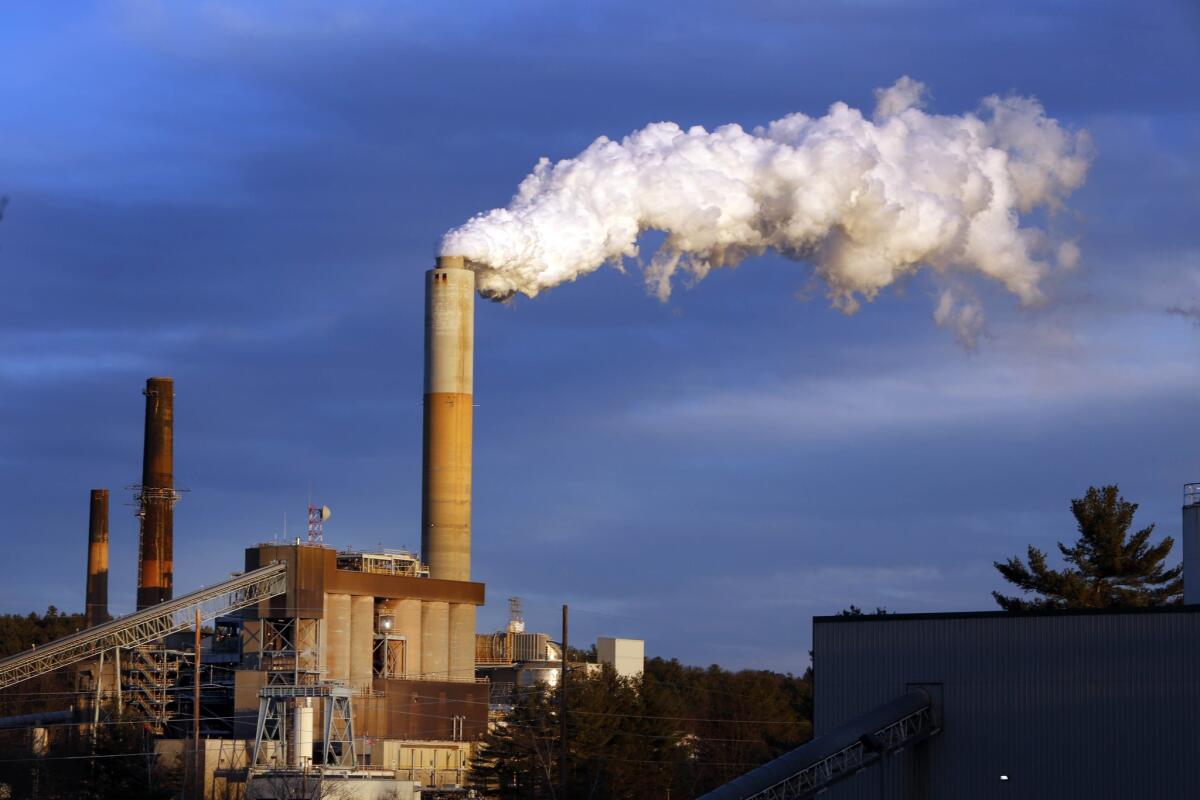Op-Ed: Reining in the coal industry’s assault on public health

On Wednesday the U.S. Supreme Court will hear arguments in a crucial case about regulating mercury and other toxic air pollution coming from coal-fired power plants. At stake is a very dangerous precedent that industry profits are more important than thousands of lives.
In late 2011, the Environmental Protection Agency issued its first-ever Mercury and Air Toxics Standards, or MATS, to reduce the pollution emitted by power plants. Simply by requiring the worst-polluting plants to match the performance and technology of their more responsible competitors, these standards will prevent between 4,200 and 11,000 premature deaths per year.
These public health protections already were years overdue because the coal industry and its allies tried to derail them from the beginning. In the current court case, the petitioners — two industry trade groups and 21 states — claim that the EPA can’t set limits on toxic air pollution without first considering the financial impact that will have on the industry. Last year, the D.C. Circuit Court rejected this argument. Industry — in a last-ditch attempt to overturn these protections — appealed, and the U.S. Supreme Court agreed to hear this case.
Air pollution is lethal. The EPA calculated that 1 in 20 deaths in the U.S. each year is related to air pollution, mostly excess instances of heart attack, stroke, lung cancer and cardiopulmonary disease.
Coal-fired power plants are by far the largest industrial source of toxic air pollution, responsible for 50% of all U.S. emissions of mercury, a potent neurotoxin particularly dangerous to children. Scientific studies have found that nearly 7% of all U.S. women of childbearing age are exposed to mercury at levels that can harm fetal brain development.
Many of those whose health is at risk are low-income and people of color. “Coal Blooded: Putting Profits Before People,” a report by the NAACP, found that the 6 million people living near power plants in America have a per capita income 15% lower than the U.S. average income, and 39% are people of color.
The EPA’s emissions standard for power plants represented a huge step forward in protecting all of us from this assault on public health.
With this lawsuit, the coal industry is trying to revive an old, dysfunctional approach to environmental protection that Congress scrapped more than 20 years ago. Before the Clean Air Act was amended in 1990, the EPA was paralyzed for decades by wrangling over which toxins should be regulated and whether controlling them was worth the expense. That system worked well for industry, but failed the American public.
In 1990, Congress decided that the EPA could consider the costs when determining how stringent its standards should be. But such estimates should not prevent the agency from controlling hazardous air pollutants at all. Nonetheless, coal industry lawyers are now claiming that before the EPA can require power plants to cut their toxic pollution, the agency must weigh the costs of compliance against the benefits.
To support this claim, the coal industry dishonestly asserts that the benefits of this particular standard are only $4 million to $6 million. But the technology needed to reduce mercury and other toxic air pollution will dramatically improve air quality, preventing thousands of non-fatal heart attacks, asthma attacks and hospitalizations and prevent up to 11,000 premature deaths a year. The EPA valued these health benefits at $37 billion to $90 billion annually.
This doesn’t even include facets that are too difficult to monetize. How do you put a price tag on reduced cancer risk? Or on a child born healthy, without mercury poisoning?
This case has divided the utility industry and states. On one side sit those that refuse to invest in modern pollution-controlling technology, putting a higher value on their own short-term profits than on public health. On the other side sit industry and political leaders in clean energy who believe that allowing laggards to operate without up-to-date technology puts those who made the investments at a serious competitive disadvantage.
Other businesses in America, from dry cleaners to oil refineries, have taken steps to reduce hazardous emissions. But the coal industry thinks its should be treated differently.
A decision for the coal industry would mean thousands of people will continue to fall ill, suffer, or even die prematurely — all to protect the profits of the worst corporate polluters.
Lisa Garcia is the vice president of litigation for Healthy Communities at Earthjustice. She was senior advisor to the administrator for environmental justice at the EPA when MATS was issued.
Follow the Opinion section on Twitter @latimesopinion and Facebook
More to Read
A cure for the common opinion
Get thought-provoking perspectives with our weekly newsletter.
You may occasionally receive promotional content from the Los Angeles Times.






